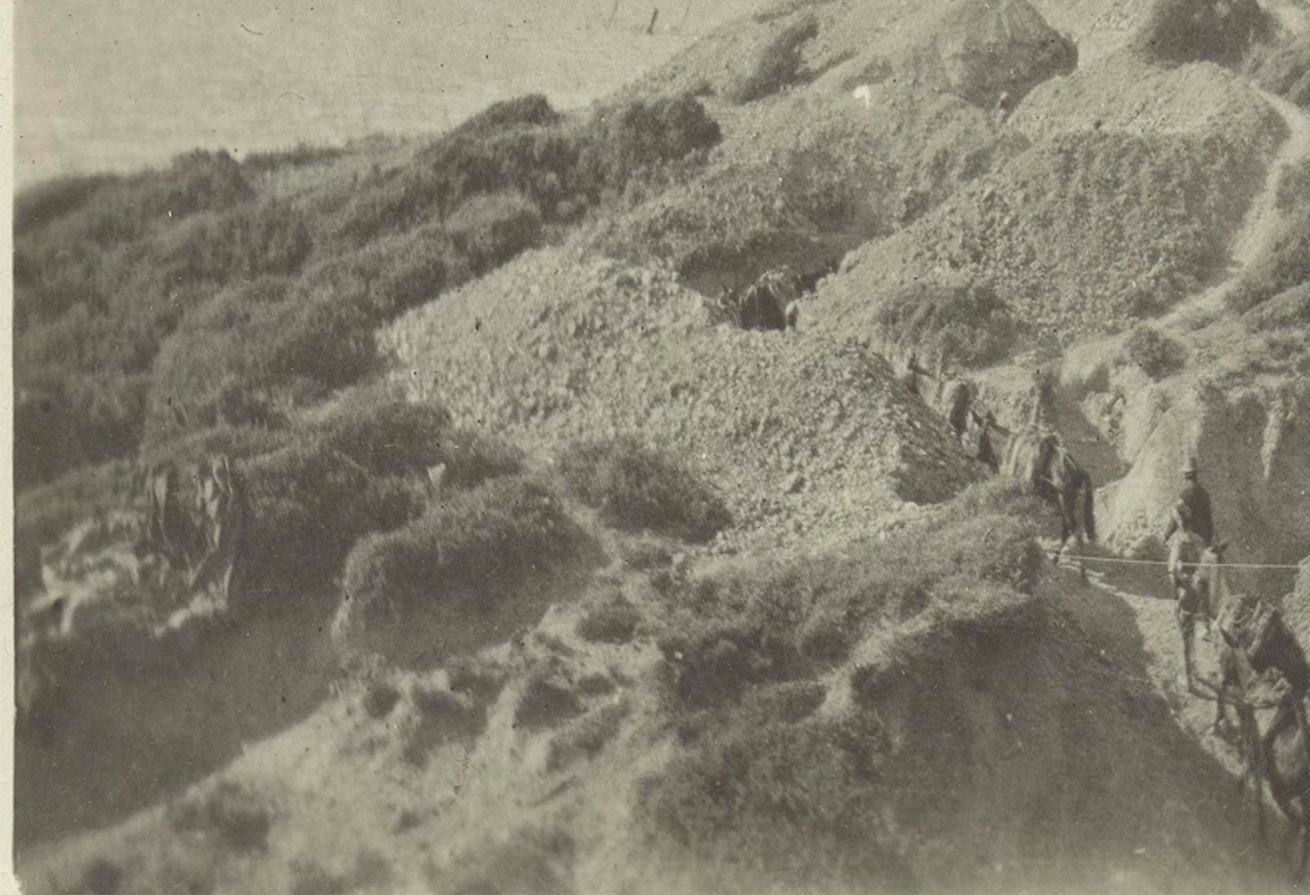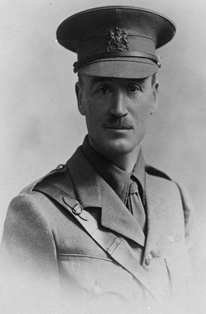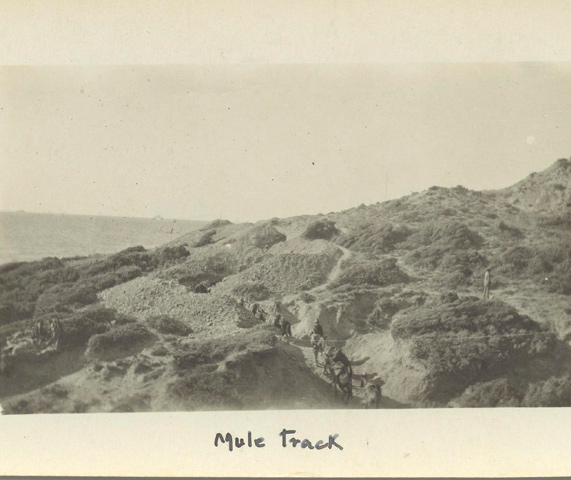
The Jewish search for a national homeland was a constant Zionist theme at the start of the 20th century. While many Zionists had settled in Palestine, the territory was under the control of the Ottoman Empire which was not supportive of the idea of a Jewish state. When the Ottoman Empire joined the war on the side of the Germans, it demanded that all Jews become Turkish citizens. 12,000 of them refused and were deported, en masse, to Alexandria in Egypt.
In Alexandria two prominent Zionists, Vladimir Jabotinsky and Joseph Trumpeldor, approached the British military commander in the region and asked for permission to form a Jewish legion that could fight the Ottoman forces in Palestine. As non-British nationals the Zionists could not be accepted into the armed forces, but they were offered the opportunity of forming a mule transport unit. In March 1915 the Zion Mule Corps was formally established, and John Henry Patterson was placed in command, with Trumpeldor acting as his assistant.
On 17 April 1915 the Zion Mule Corps, under Patterson’s command, sailed from Egypt to Lemnos, and then onto Gallipoli. The Corps consisted of 562 mostly Palestinian Zionists, five British officers, eight Jewish officers and 750 mules. The corps was divided in two, with one section working for the British 29th Division and the remainder assigned to the ANZACs. The first group landed at V Beach at the start of the campaign, and were vital in moving a myriad of supplies from the beaches to the front lines. Each mule was fitted with a wooden carrier that allowed it to carry 16 gallons of water at a time.
In addition to their work transporting supplies, the Mule Corps also took part in the fighting. In May members of the corps were at the front line when they witnessed a charge by the Inniskilling Fusiliers. The Inniskilling numbers were reduced by Turkish fire, so the Mule Corps, led by Corporal Elie Hildesheim joined the charge and prevented further loss of life. All observers at Gallipoli heaped praise on the Mule Corps for their relentless hard work and their bravery. They were particularly noted for delivering ammunition to the front, and then returning with the injured on their mules. Two members of the corps, Nissel Rosenberg and Mayar Erchkovitz received the DCM for bravery in action.
The Zion Mule Corps served throughout the campaign in Gallipoli, and were evacuated in December 1915. By the close of the campaign 14 members of the corps had been killed or had died of illness and 25 had been wounded. Prior to the final evacuation the corps had to kill their mules so that they did not fall into the hands of the Turks.

Patterson was born in November 1867 at Ballymahon, Co Westmeath. He joined the army in 1885 and served initially in India. In 1898 he was stationed in British East India supervising the construction of a railway bridge. A pair of lions attacked the labourers and mauled 130 of them before Patterson, hidden in a tree, shot and killed the animals. He published his account of the incident, and his memories of his wider experiences in Africa (including service in the Boer War), in The Man Eaters of Tsavo in 1907. In 1913, after a period in Kenya where he was disgraced due to rumours of an affair, Patterson was back in Ireland and a commander of the West Belfast Division of the UVF. He served initially on the western front, before being posted to Alexandria in 1915. After the war ended Patterson became an outspoken supporter of the Zionist cause and was heavily critical of British government policy, most notably in his 1922 book, With the Judaeans in the Palestine Campaign.
Patterson moved to the United States at the start of the Second World War, where he worked with Jabotinsky, and later Benzion Netanyahu, in advocating for the creation of a Jewish army to fight the Nazis in Europe. He died in 1947, and is remembered at both the Jabotinsky Institute and Museum in Tel Aviv (where his papers are held) and at the Jewish Legions Museum that honours those Zionists that fought in World War One.

The Mule Corps was disbanded on 26 May 1916. In 1917 Patterson convinced the War Office to create a Jewish legion within the army. It came together in August 1917 and was formed as the 38th Battalion of the Royal Fusiliers under the command of Patterson. By the end of the war there were 5,000 men in the Jewish legion, and they were instrumental in the fighting in Palestine at the Battle of Megiddo which brought the resistance of the Ottoman Empire to an end.
Patterson had always expressed the desire that he be buried in Israel. Unfortunately he died in straightened circumstances in the United States and was buried in Los Angeles in 1947. In 2010 a campaign began to have Patterson’s remains moved to Israel. It was successful and on 4 December 2014, the remains of Patterson and his wife, Frances, were buried at the agricultural co-operative of Avihayil. The ceremony was attended by the Israeli Prime Minister, Benjamin Netanyahu, who referred to Patterson as the ‘godfather of the Israeli army’.